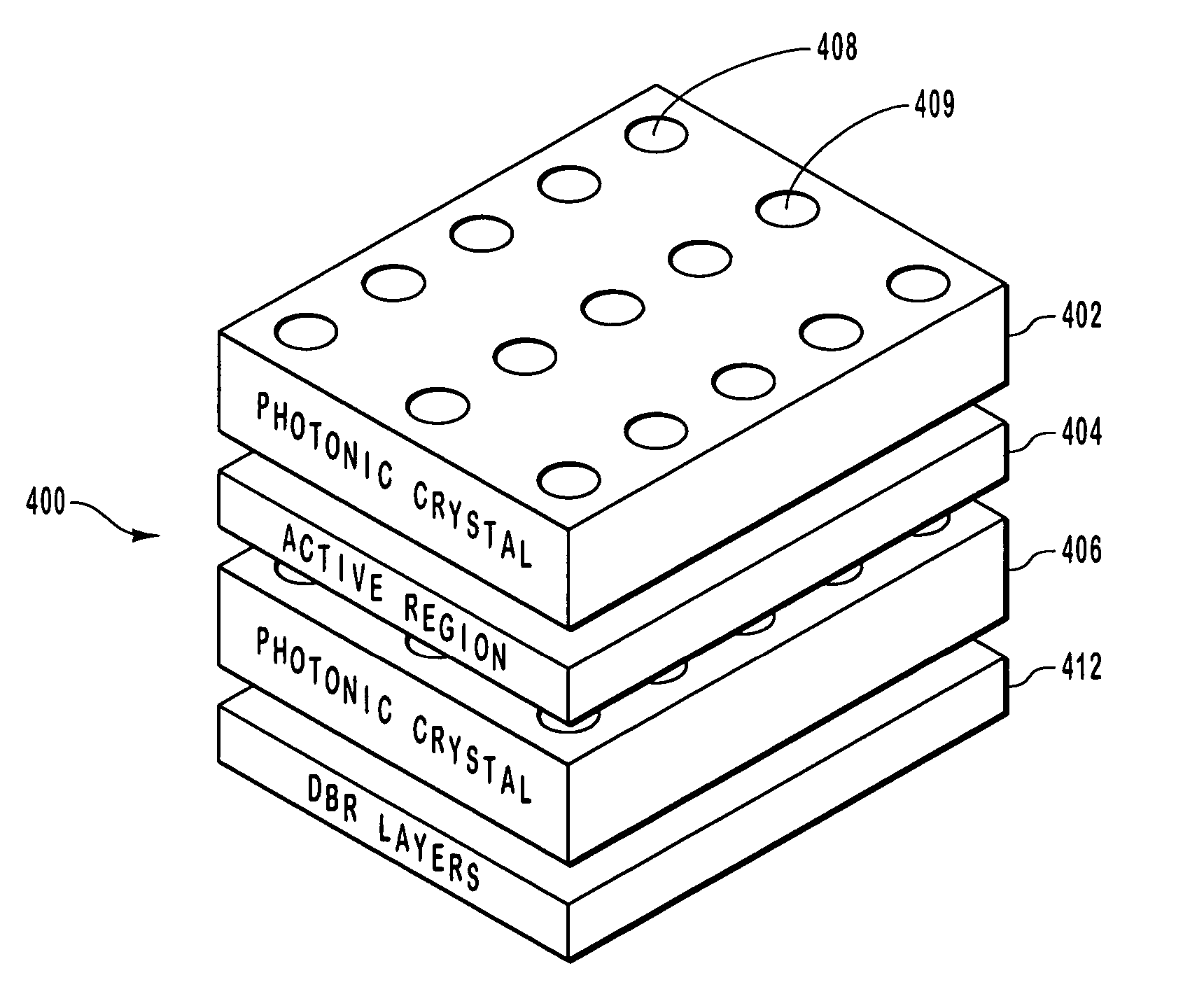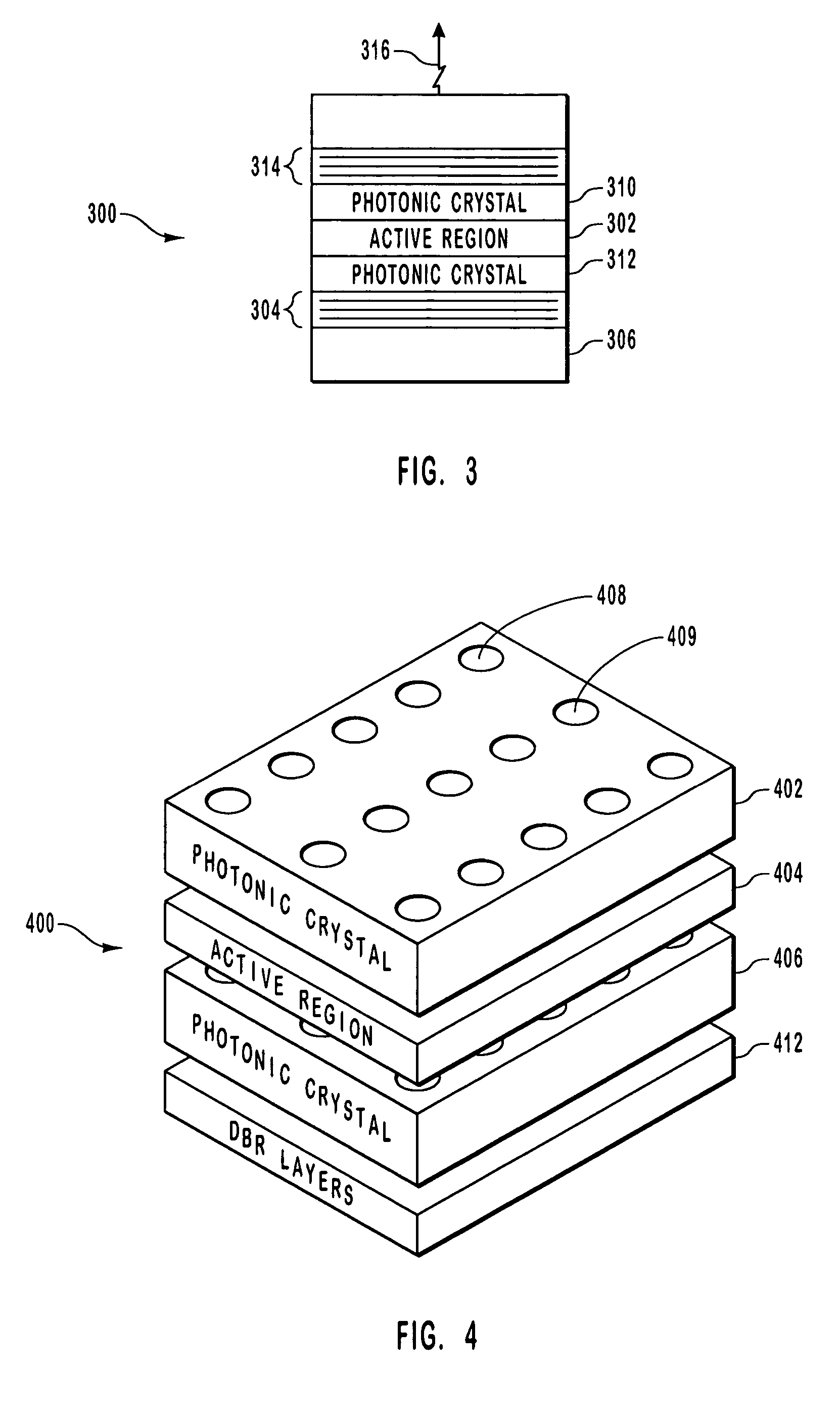Polarization control in VCSELs using photonics crystals
a technology of photonic crystals and polarization control, which is applied in the direction of semiconductor lasers, optical resonator shape and construction, laser details, etc., can solve the problems of polarization of optical beams, thermal heating during operation and the growth or formation of layers, and the inability to meet or achieve the reflectivity requirement of vcsels
- Summary
- Abstract
- Description
- Claims
- Application Information
AI Technical Summary
Benefits of technology
Problems solved by technology
Method used
Image
Examples
Embodiment Construction
[0022] An 850 nm VCSEL is typically constructed on a semiconductor wafer such as Gallium Arsenide (GaAs). The VCSEL includes a bottom mirror constructed on the semiconductor wafer. Typically, the bottom mirror includes a number of alternating high and low index of refraction layers. As light passes from a layer of one index of refraction to another, a portion of the light is reflected. By using a sufficient number of alternating layers, a high percentage of light can be reflected by the mirror.
[0023] An active region that includes a number of quantum wells is formed on the bottom mirror. The active region forms a PN junction sandwiched between the bottom mirror and a top mirror, which are often of opposite conductivity types (i.e. a p-type mirror and an n-type mirror). Free carriers in the form of holes and electrons are injected into the quantum wells when the PN junction is forward biased by an electrical current. At a sufficiently high bias current (i.e. the threshold current) t...
PUM
 Login to View More
Login to View More Abstract
Description
Claims
Application Information
 Login to View More
Login to View More - R&D
- Intellectual Property
- Life Sciences
- Materials
- Tech Scout
- Unparalleled Data Quality
- Higher Quality Content
- 60% Fewer Hallucinations
Browse by: Latest US Patents, China's latest patents, Technical Efficacy Thesaurus, Application Domain, Technology Topic, Popular Technical Reports.
© 2025 PatSnap. All rights reserved.Legal|Privacy policy|Modern Slavery Act Transparency Statement|Sitemap|About US| Contact US: help@patsnap.com



